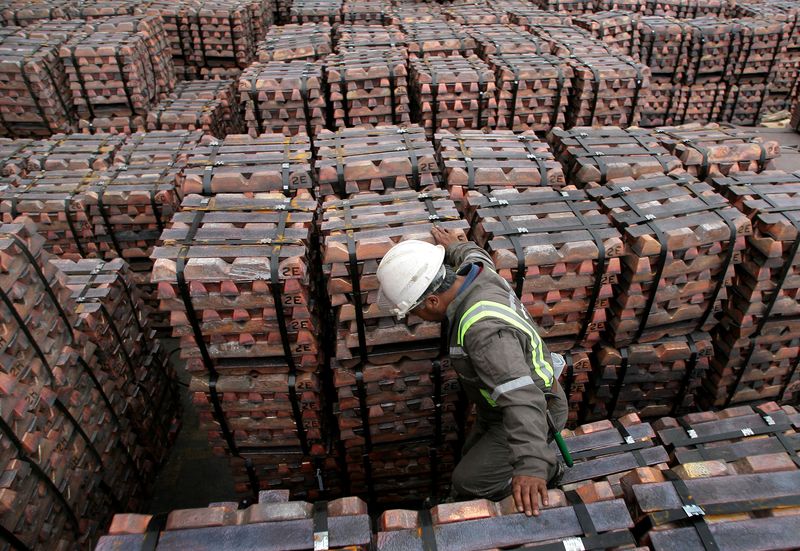Copper to be key driver of price gains among industrial metals in 2025: UBS
Investing.com -- Copper is poised to emerge as the standout performer among industrial metals in 2025, driven by a combination of supply constraints and improving global economic conditions, as per analysts at UBS Global Research.
Following a challenging year in 2024, characterized by uneven price movements across base metals, copper is expected to benefit from supply tightness and a rebound in manufacturing demand.
UBS projects that copper prices could reach $11,000 per metric ton by the end of 2025, fueled by a deficit in global market balances.
Refined copper production growth is forecast to remain subdued due to low treatment and refining charges, as well as tight scrap availability.
Additionally, while new smelter capacity in countries such as China and Indonesia is ramping up, the overall supply increase is anticipated to fall short of demand growth, which UBS estimates at 3.4% for the year.
Global economic recovery, particularly in the latter half of 2025, is expected to play a significant role in copper's price momentum.
UBS flags that manufacturing activity in the United States and other advanced economies is likely to improve, spurred by anticipated interest rate cuts and renewed fiscal stimulus in China.
These factors are expected to offset some of the challenges posed by ongoing trade tensions and a slow start to the year.
China, which accounts for over half of global copper demand, remains a key factor in the market.
While the country faces external pressures from U.S. trade policies and internal headwinds in its property sector, UBS analysts suggest that targeted stimulus measures, particularly those aimed at boosting household consumption, will provide critical support to copper demand.
Compared to other industrial metals, copper's outlook is notably stronger. While zinc and aluminum are expected to post gains as well, their performance is likely to lag behind copper.
Meanwhile, nickel and lead are projected to remain under pressure due to surpluses and weak demand fundamentals.
The robust demand for copper also stems from its integral role in the transition to a low-carbon economy.
Its extensive use in renewable energy infrastructure and electric vehicles continues to underpin long-term demand growth, making it a key beneficiary of structural shifts in the global economy.
Despite the positive outlook, UBS warns of potential risks to the forecast. A significant deterioration in global economic conditions or insufficient policy support could weigh on copper prices.
However, with a market deficit and tight supply dynamics, any pullbacks are expected to be temporary, solidifying copper's position as the likely driver of price gains among industrial metals in 2025.
Source: Investing.com
